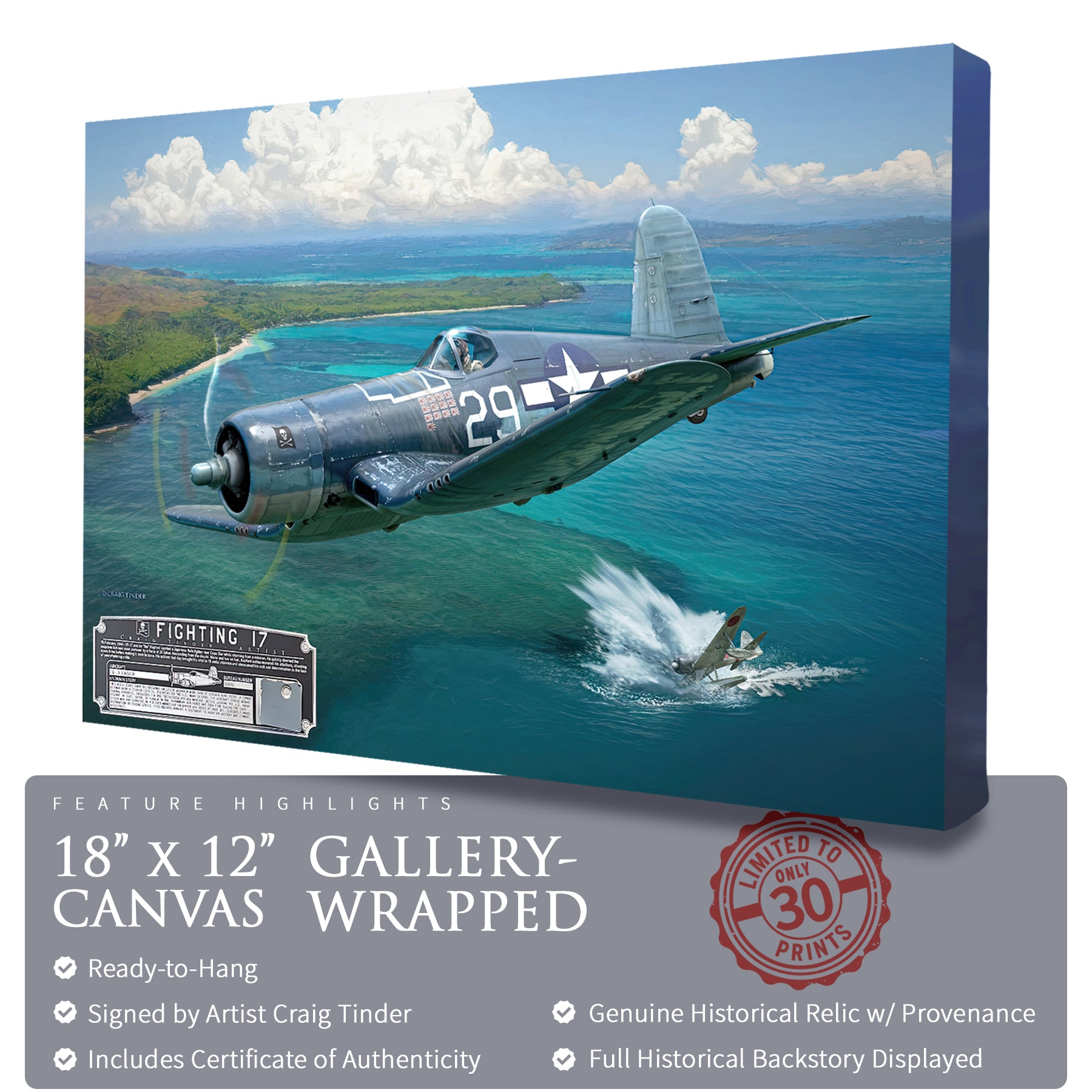
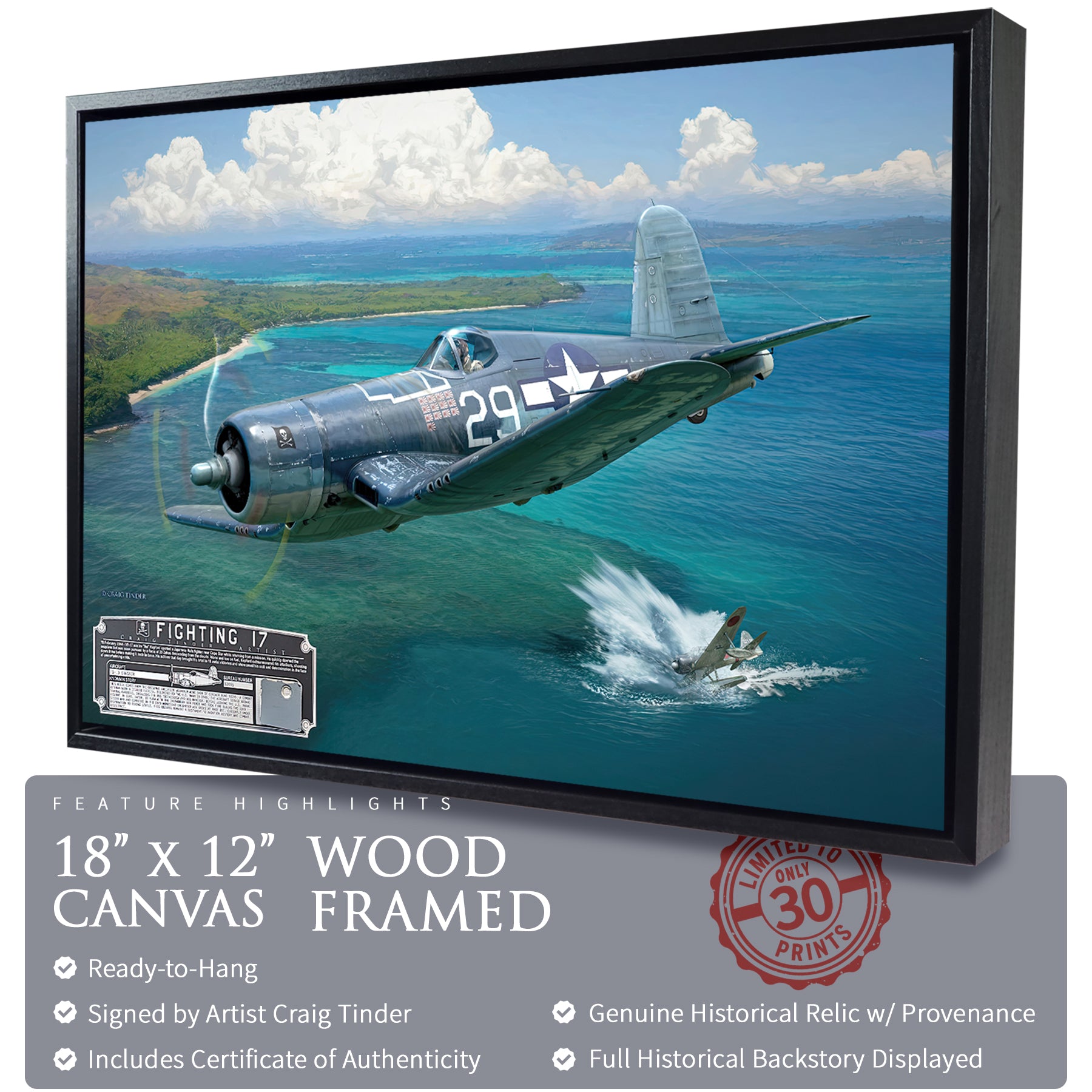
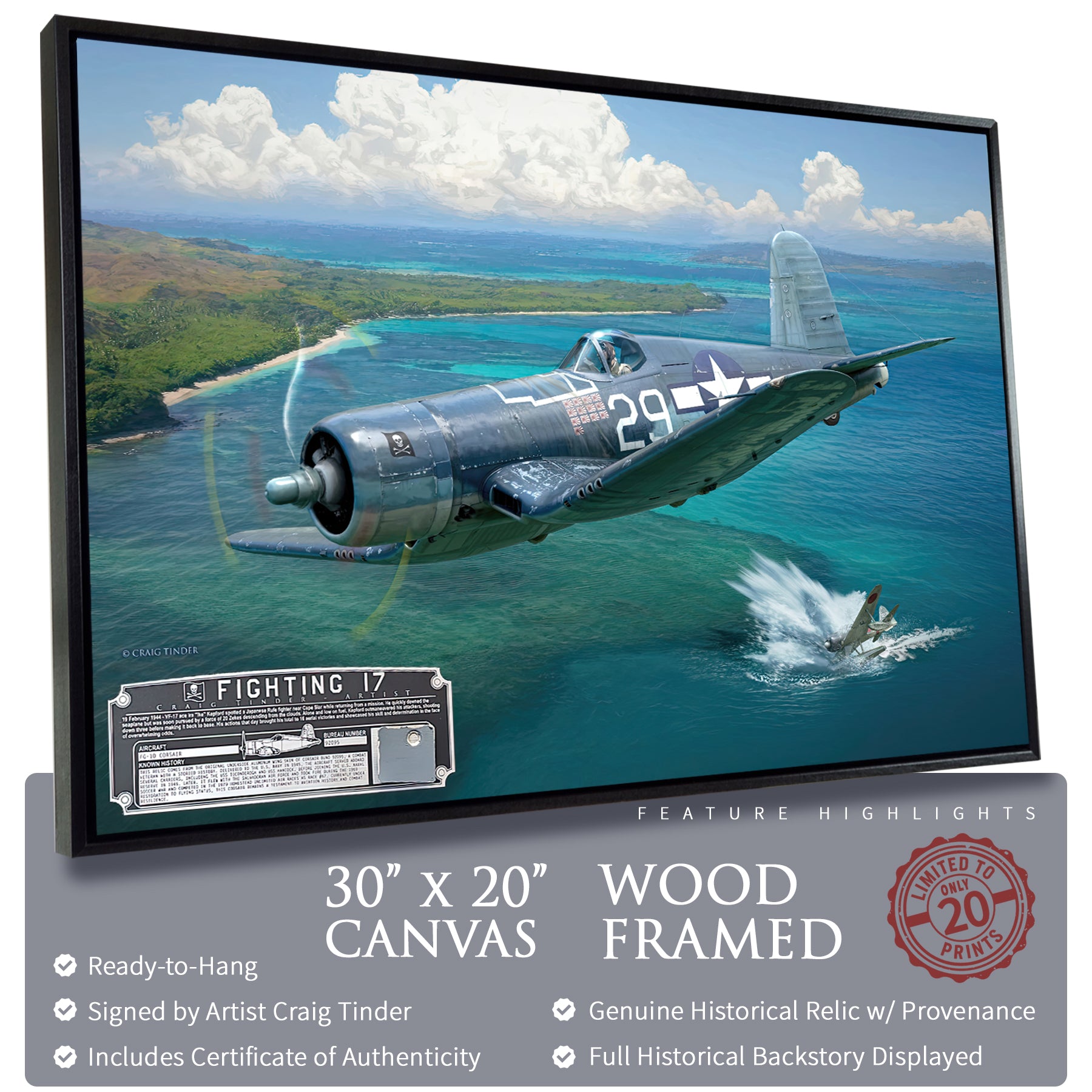
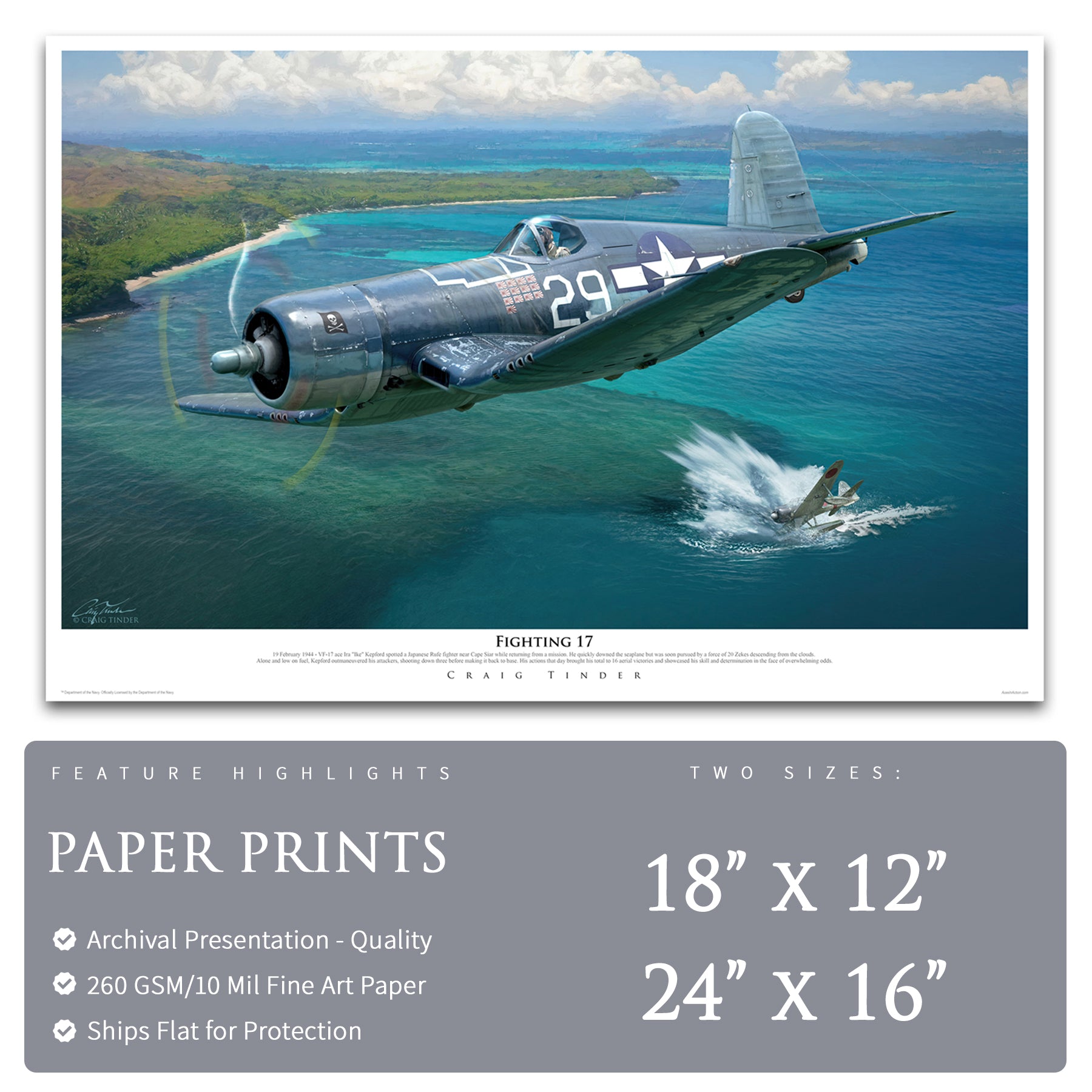
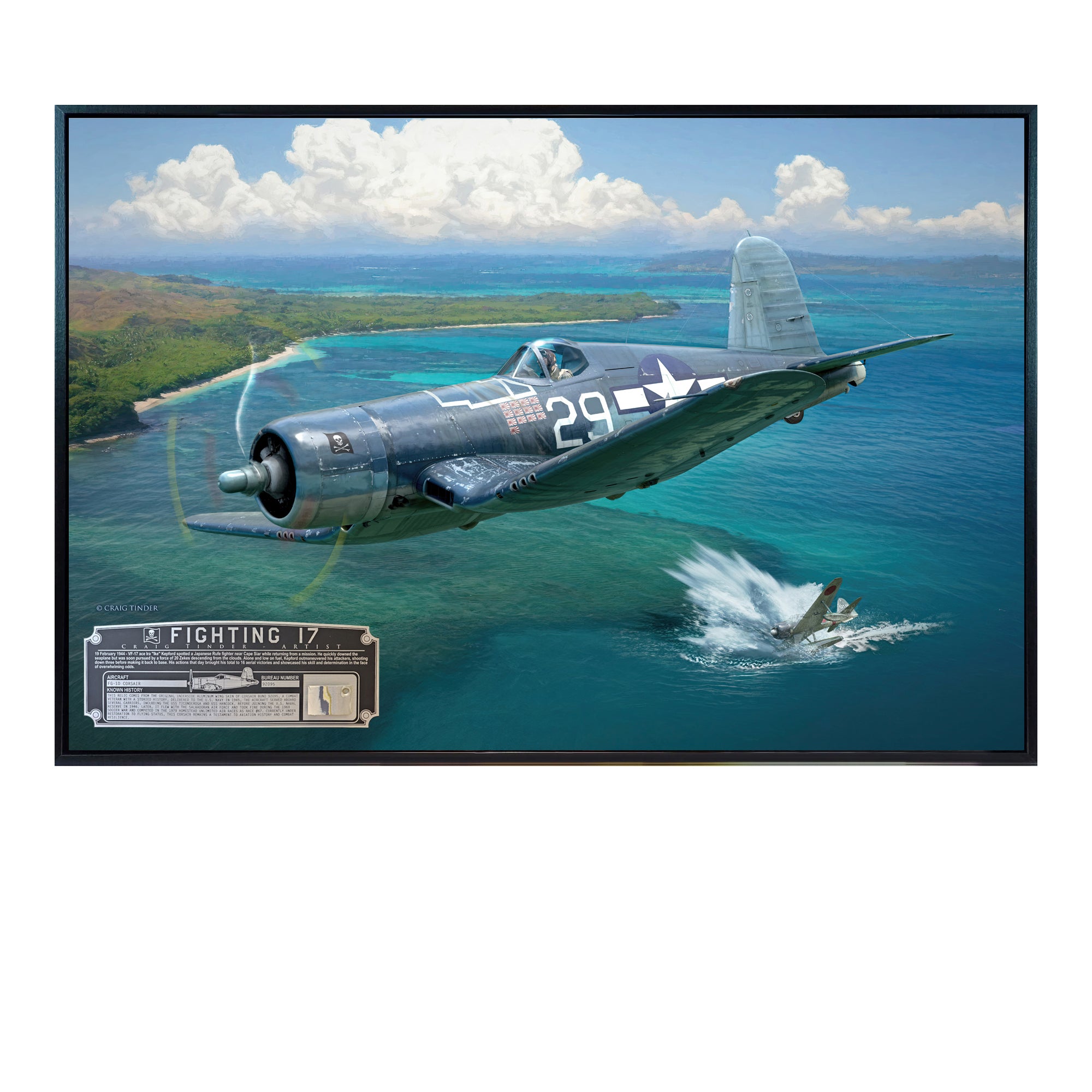
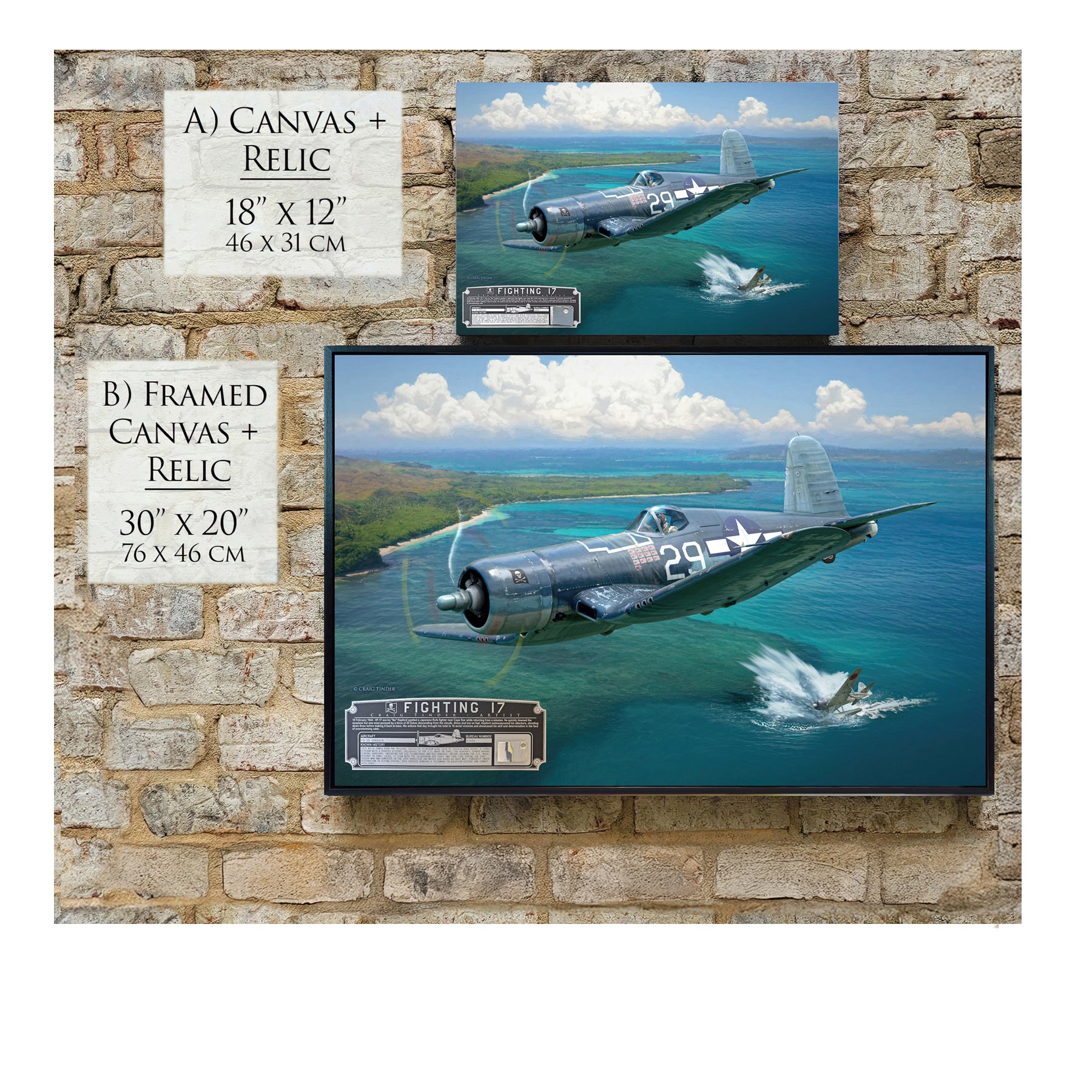
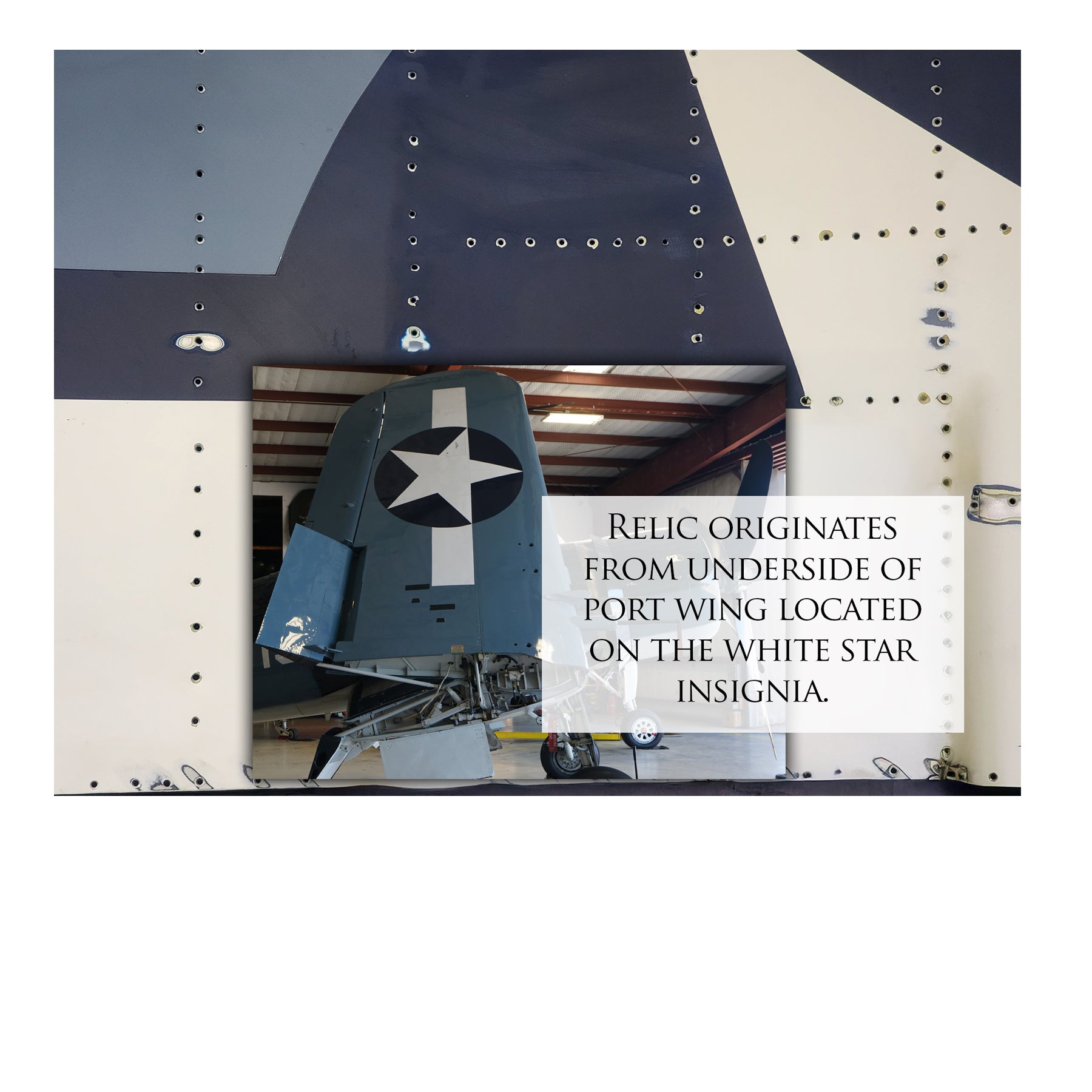
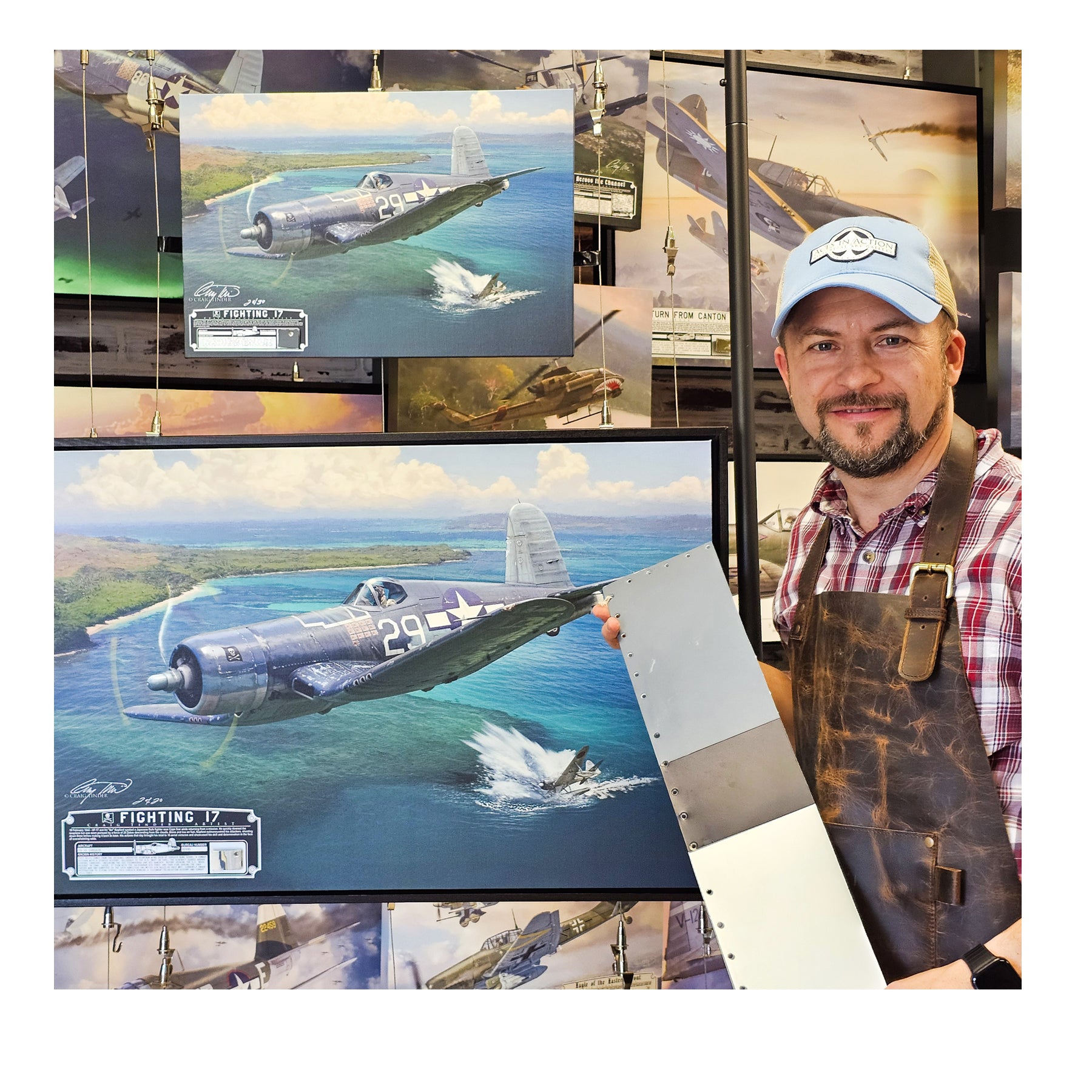




F4U Corsair - Fighting 17 Canvas | INCLUDES: Wing Relic

F4U Corsair - Fighting 17 Canvas | INCLUDES: Wing Relic
If you have any questions, you are always welcome to contact us. We'll get back to you as soon as possible, within 24 hours on weekdays.
Shipping Information
Use this text to answer questions in as much detail as possible for your customers.
Customer Support
Use this text to answer questions in as much detail as possible for your customers.
FAQ’s
Use this text to answer questions in as much detail as possible for your customers.
Contact Us
Use this text to answer questions in as much detail as possible for your customers.
Description
About the Relic & Process
This aluminum fragment, once part of the starboard wing of a Goodyear-built FG-1D Corsair, Aircraft No. 92095, tells a story of service spanning decades and two significant conflicts. The wing panel, removed during restoration in 2022, came from beneath the iconic American Star emblem and was provided to Aces In Action in order to complete a commission art piece to commemorate its historical journey.
Corsair BuNo. 92095 lower wing panel with photo showing star
About Corsair 92095
First taken into service by the United States Navy in April 1945, Corsair No. 92095 was assigned to Bombing Fighting Squadron 80 (VBF-80) aboard the USS Boxer (CV-21) during the final months of World War II. Known for its rugged design and powerful performance, the F4U Corsair played a pivotal role in both air-to-air combat and ground attack missions in the Pacific theater.
After the war, in 1957, the aircraft was transferred to the Salvadoran Air Force (Fuerza Aérea Salvadoreña) and redesignated FAS-220 as part of the U.S. Military Assistance Program. This Corsair saw combat once again during the 1969 Football War (also known as the Soccer War), a brief conflict between El Salvador and Honduras. On 14 July 1969, Salvadoran forces, including FAS-220, attacked Honduran airfields using a mix of aircraft, including P-51 Mustangs and C-47 Skytrains. The Corsair was involved in these operations and even sustained minor anti-aircraft fire damage to its port wing.
Following its military service, Corsair No. 92095 was placed on static display at the Evergreen Air Museum. In recent years, it has been undergoing restoration at Airpower Unlimited in Jerome, Idaho, to return the aircraft to flying status. This relic, preserved from the original airframe, serves as a testament to the Corsair’s enduring legacy, from the Pacific battles of WWII to its role in a 20th-century regional conflict.
Disclaimer
By purchasing from Aces In Action, you acknowledge that the product may vary slightly from the images on our website. We use authentic materials from military vehicles and relics, which may contain potentially hazardous substances. These items are not intended for ingestion, inhalation, or use by children. Aces In Action is an independent company, unaffiliated with or endorsed by any other organization. All names, logos, and trademarks are the property of their respective owners and are used for identification only, in accordance with the Lanham Act. Their use does not imply any official endorsement.

